[021] Camino Del Puma
I'm travelling in South America. Here's what I'm up to, some photos and other bits
It’s midday on the first day of August and we’re running/foot-skiing/moon-walking straight down the soft pumicey slope of a volcano with fifteen people from the local town of Calacoa. The wind carries volcanic dust away from our footsteps. The red and white bands of the Peruvian flag are being proudly lifted by the leader at the back of the group. Some tread carefully but most run carefree, even the elderly. A few people sit in the pumicey earth for a breather. I offer my hand to a lady swaddled in shawls and skirts and we’re running again. I’m covered head to toe in dust, a bit tipsy, pretty breathless - this is so damn fun! How did we get here?
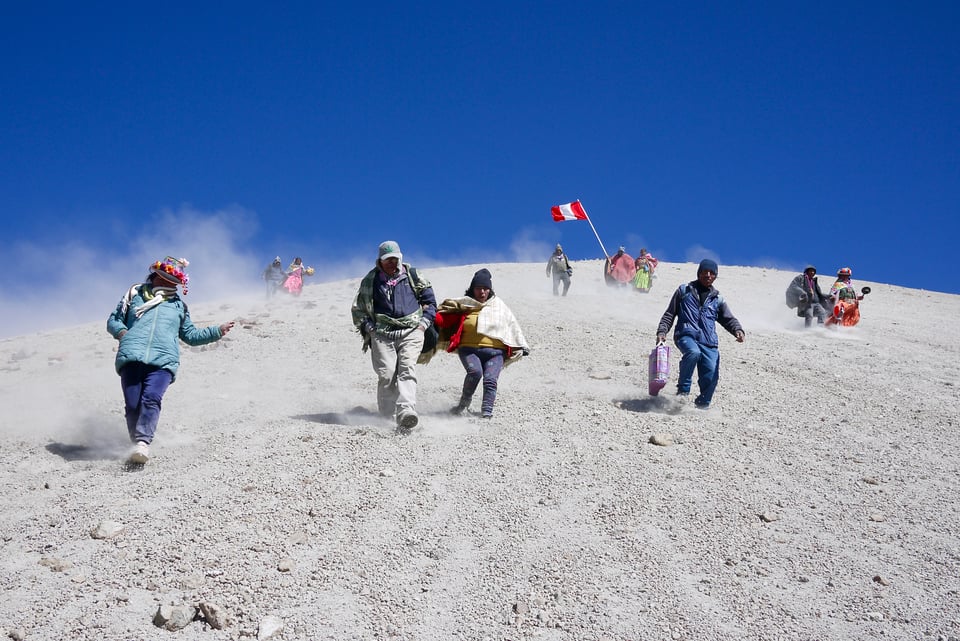
The literal answer is bikepacking, but another is the kindness of the Peruvian people. We were halfway into our 20 day cycle trip to Arequipa from La Paz when this happened. Already we’d experienced the warmness of the locals who always seemed willing to provide us with food and refreshments, and often a bed for the night. We were cycling through barren infrequently-visited landscapes where it is not all that common for turistas to pass through the small villages, so most of the people we passed would share a wave or stop for a while to chat with us.
Our first few days skirted the shores of Lake Titicaca soon after leaving the sprawling city of La Paz, a green sunny land with a fresh breeze blowing off the lake. Then the remoteness and jaw-dropping scenery stepped up after we crossed the Bolivia-Peru border and entered the heart of Peru’s central volcanic zone. A vast Mars-like desert covered in marbled layers of tephra, pumice and sand. We made two big passes in this vast landscape, and after an exhausting day pitched our tent in a sheltered field of volcanic blocks at the foot of Volcan Ticsani.
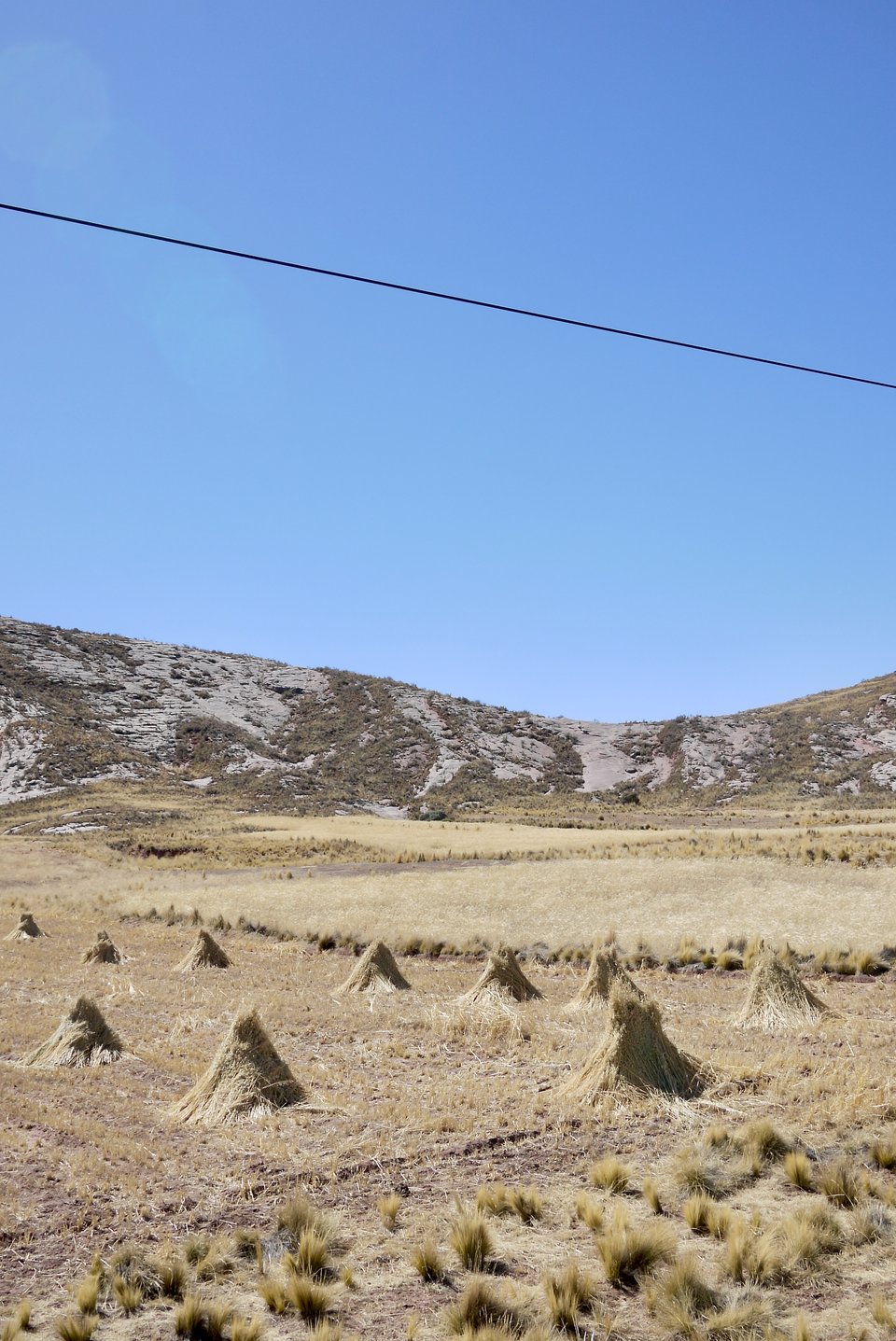
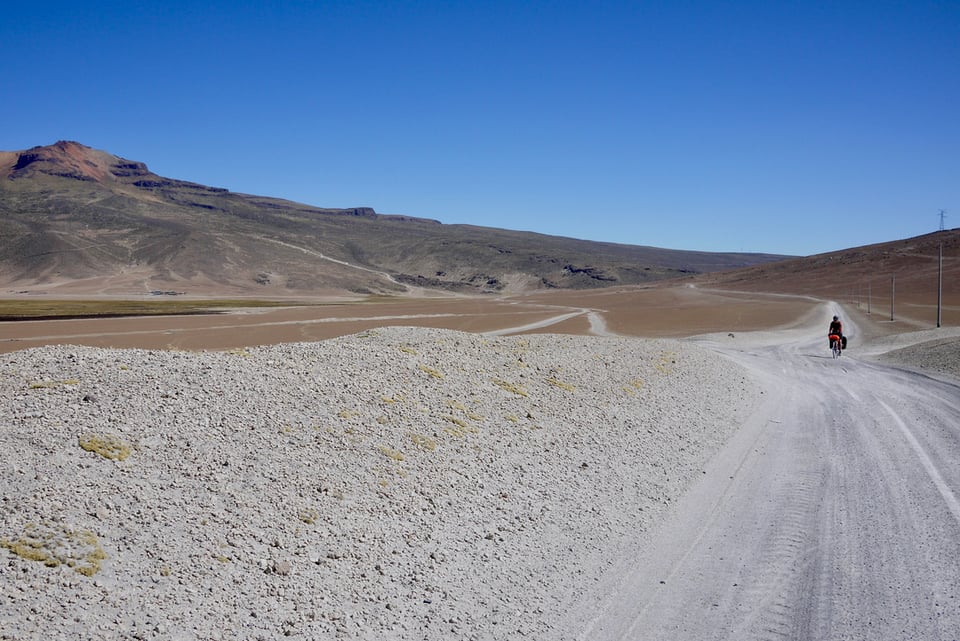
We’d heard you could walk to the 5,400m summit of Ticsani, so after brekky we started up the winding path. It was beautiful gentle walking and as we climbed the vast landscape opened up. We could spot the two dark lakes in the basin which we’d crossed the day before, and to the north Volcan Ubinas and Volcan Huaynaputina whose eruption in 1600 was the largest in South American history.
As we got closer to the summit we realised a group of people were decorating a cross and performing a religious ceremony around a fire. Slightly nervous to interrupt we tiptoed closer and then realised we were being beckoned over. Cue hugs from all of the group, lots of selfies at their request, and a few capfuls of 96% alcohol (we’d been using it as fuel for our stove but is quite a popular drink with the locals).
1st August is Pachamama Day in the High Andean communities of South America. Originating from Incan mythology people give thanks to the goddess of earth for the bounties of nature and seek her blessings for future harvest. And so this group of fifteen - friends, families, neighbours; young and old - had climbed to one of the highest points in the area to burn offerings known as ‘despachos’, in this case a variety of foods, coca leaves and colourful handmade trinkets wrapped up on a styrofoam tray. The maestro of the ceremony passed it around the group and people said their prayers. When it was my turn I tried to copy, making a cross shape on the tray with the edge of my straightened hand, then kissing my hand and marking a cross between forehead, chest and shoulders.
We stood around the fire and people delivered a message of thanks and hope for the next year. The responsibility of master of ceremonies for 2025 was passed onto a couple, and they delivered a message of encouragement for the year, saying how it would be important for the community to support each other. It was rather lovely. Then they asked for some words from the ‘Ingles’. I said something about being thankful for making us a part of their day, and how in future August 1st’s although we won’t be there, we will remember this day every year. A smattering of applause went round the group and I breathed a sigh of relief. If I really wanted to toot my own trumpet I could mark it down as a standing ovation - I mean they were definitely all standing.
I must say, I did feel something akin to an enlightened moment. Although I understood only half of what was said, and am generally not a religious person, there was something special about taking part in a community offering words and goods to a higher power. And something incongruous about the women’s colourful shawls contrasting against the barren altiplano which expanded in all directions, thousands of metres below. Maybe it was the alcohol talking.
At some point somebody decided the religious ceremony was done, and so we took to the ridge of the volcano to sit in a row like teenagers in the park. Caps of the 96% stuff was served along the row - for ‘warmth’, for ‘strength’. Beer bottles were opened and a shared plastic cup was passed along. We were encouraged rather frequently to take ‘pequito’ from an open bag of coca leaves. I kept adding to the wad in my upper gum. And so here I was, getting lightly sloshed at an altitude higher than any point in Western Europe.
Then we descended on our volcano run. We were fed potato and alpaca (the poor little head sitting freshly decapitated next to the head chef), whilst the women fretted over how cold Izzy must be in shorts, and the now heavily drunken maestro gazed up the volcano searching for a couple who had somehow disappeared on the way down.
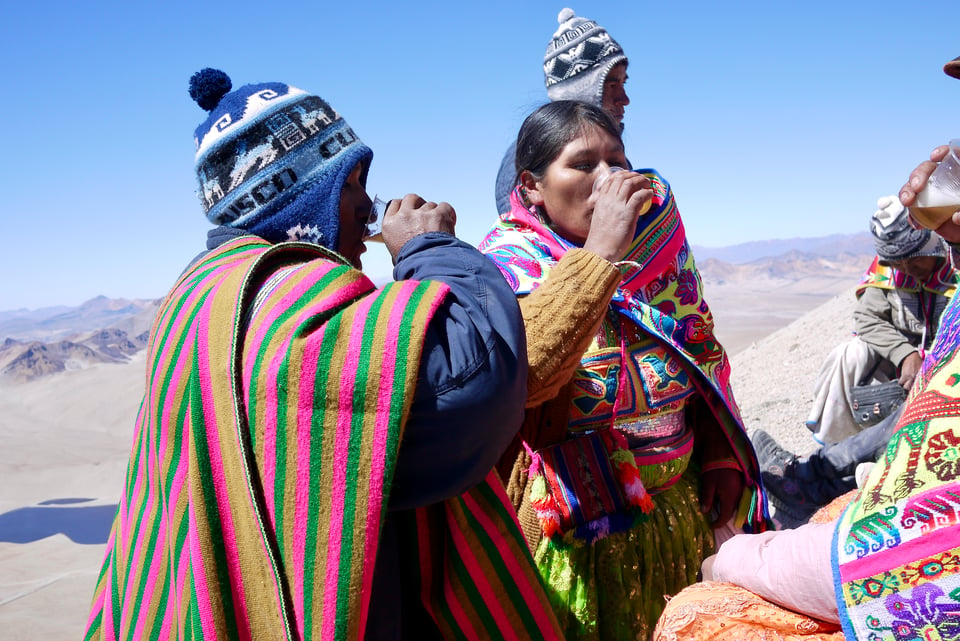

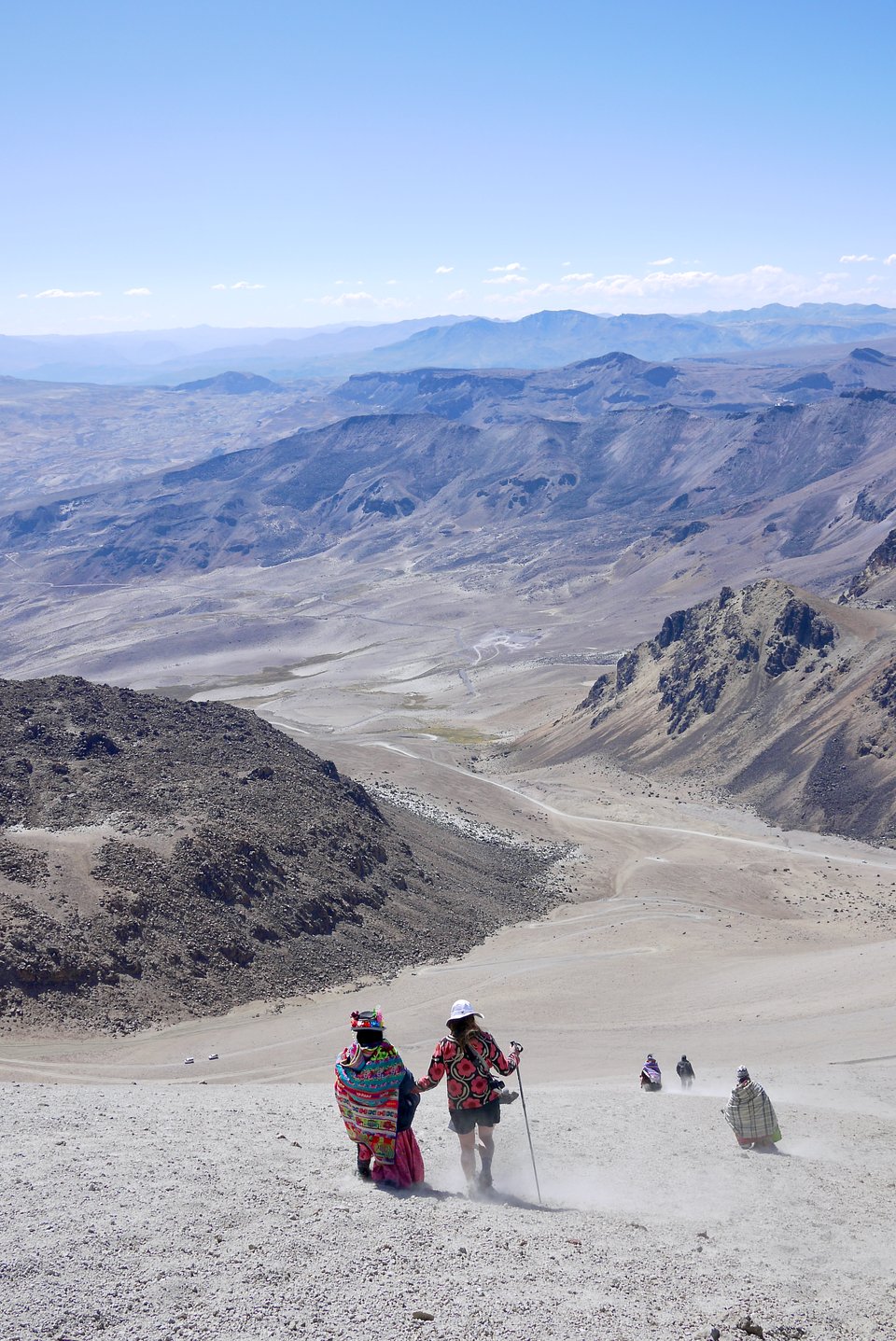
We were invited to their town for a fiesta that night, so hopped on the bike and rolled 1,000m down the tarmac - hadn’t seen that in a while - to their town nestled below, no pedalling required. It was the most spectacular half hour of riding. The late afternoon sun filled the green valley with milky silver light. We departed from a lifeless barren landscape, and as we descended, life returned in layers - first flowing water, then gorgeous smelling purple flowers, then the eucalyptus trees and grazing livestock.
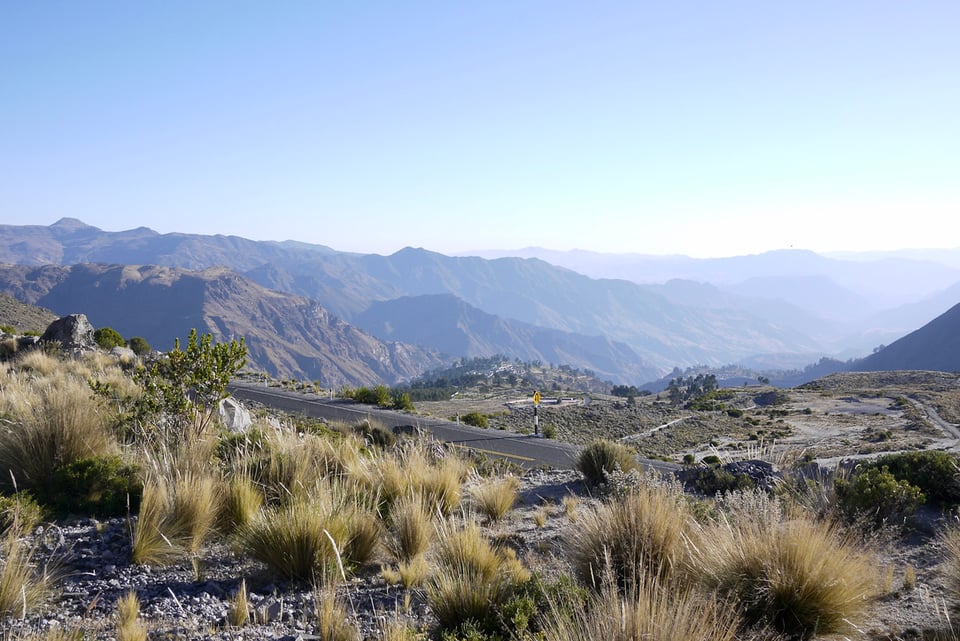
These lovely interactions weren’t unique to our climb up Ticsani. First we had the group of five elderly gentlemen who bombarded us with a mix of Quechua/Castellano (as they call it here) when we entered their pueblo. We could communicate enough to wangle a space on the floor of the town judge’s house, but not before he invited his friends round for a little piss-up. Then there was the little boy who rode with us over the final few hundred metres of our days climbing. Well, rode would be an understatement - he absolutely burned us over the tops on his little red single speed. A future Peruvian olympian?
We also had the pleasant surprise of stumbling across a little village which we had somehow missed on the map. The welcome sign stood next to another announcing we were entering a ‘military zone’. We’d planned a night of camping, but the two women we spoke with seemed mortified when we asked if there was a place out of the wind we could pitch our tent, and so they promptly found us a hostel room. It did seem strange that all the people in the village were women, most clad in luxurious looking Gucci tracksuits. We got chatting and they told us the military base was actually Peru’s highest security prison, and they were here visiting their esposos. “Oh, they work in the prison do they? As guards?”. No was the prompt reply as they glanced at each other and burst into a fit of cackles. The next morning they asked why we didn’t take them up on their invitation for a few cervezas. I wouldn’t say we hid that evening, but we definitely watched a movie and didn’t leave our room on the off chance we’d bump into them. I’m sure they’d have had some great stories, but what do they say…? Play with matches you get burned and all that.
We also had the night after our hardest day (1,000m of climbing, headwind, still fighting off a stomach bug etc.) where we’d finally pitched our tent, had eaten, and were climbing into our sleeping bags when two torchlights started walking towards us. Two 70 year old alpaca farmers from down in the valley (they had a herd of 200) were concerned that we were ‘bad people’, and insisted that we must stay with them as people with guns drive the road at night. At first I was peeved having to pack our stuff away in the cold, but brightened when I saw the lovely bed they were providing us and gratefully accepted a warm herbal tea. At breakfast I took one for the team and struggled through four alpaca steaks (delicious actually), two of which were Izzy’s. The concept of vegetarianism isn’t easily understood in these parts.

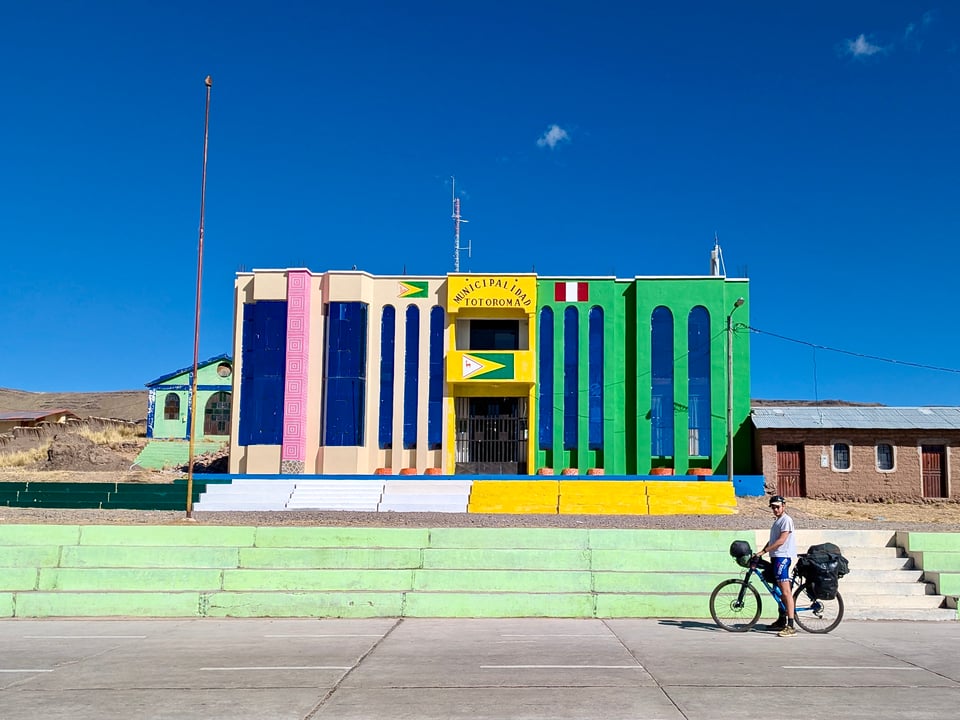
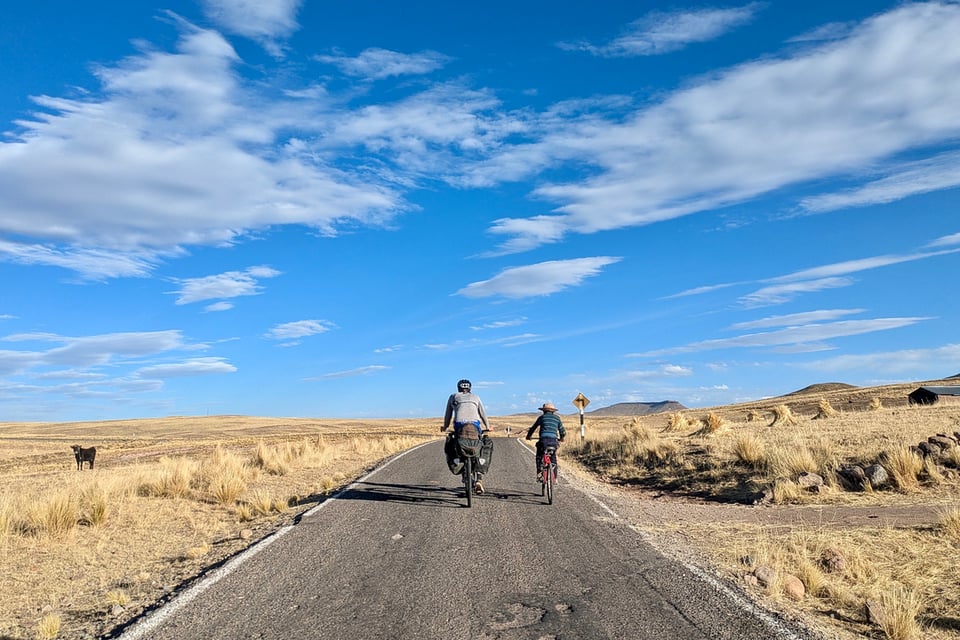
After these interactions and our Ticsani adventure it was mainly descending towards Arequipa. We entered the Rio Tambo Canyon which took our breath away. Words can’t do justice the scale of this place. We didn’t pedal for two days as we rolled down the newly tarmaced switchbacks which snaked down the valley sides. We didn’t pass a car in two days and the only people we passed were the orange-clad road workers touching up road signs.
In the Tambo you got a great sense of the incredible power which tectonic forces exert on this region. In places the earth seemed to have been split open like tissue paper, and the exposed steep valley sides displayed a full range of earthy reds, yellows and purples. It fitted perfectly into the philosophical concept of the sublime, and left me feeling the true scale of our human limitations compared to the mighty forces of nature.
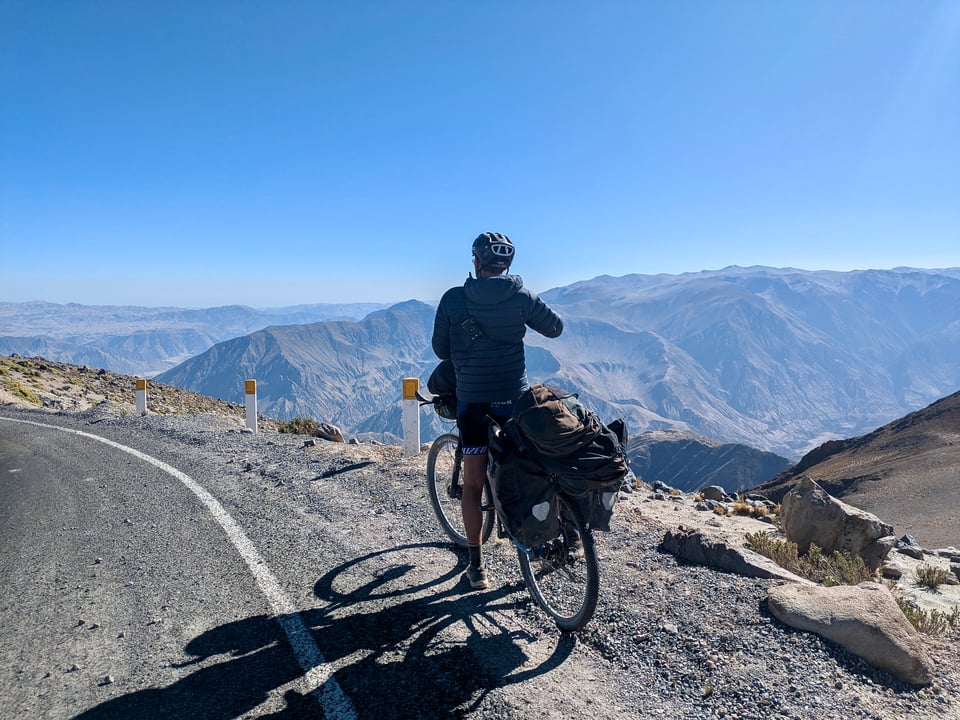
(4,700m)
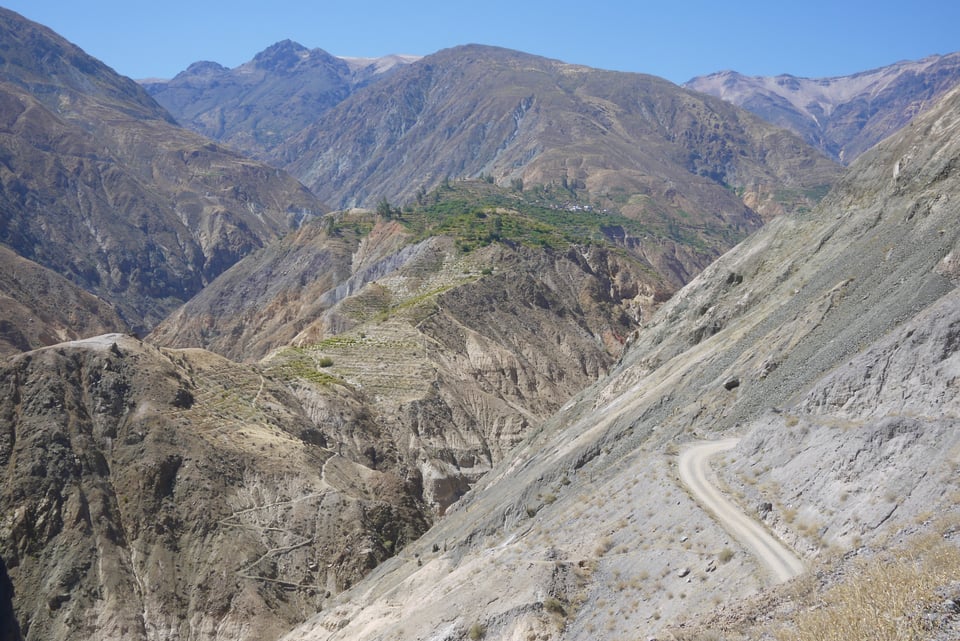

(1,600m)
After two days of descending we rested up in the oasis of Quinistaquillas. It’s a verdant green haven in this barren land fed by an underground volcanic spring. We were gifted 22 avocados which we let ripen in our bag and have been feeding us over the last few days. They also grow an intriguing fruit called a lima which tastes somewhere in between a lemon and a satsuma.
Kindness continued to flow in this town, and we ended up staying for a rest day after our friend Frank sorted us out a stay in the municipal hostel and took us on a tour of the area in his 4x4. We visited the half-buried structures of homes which were tragically destroyed in the 1600 eruption of Huaynaputina which sent violent lahars down the valley, covering it in a a 2m layer of volcanic mud.

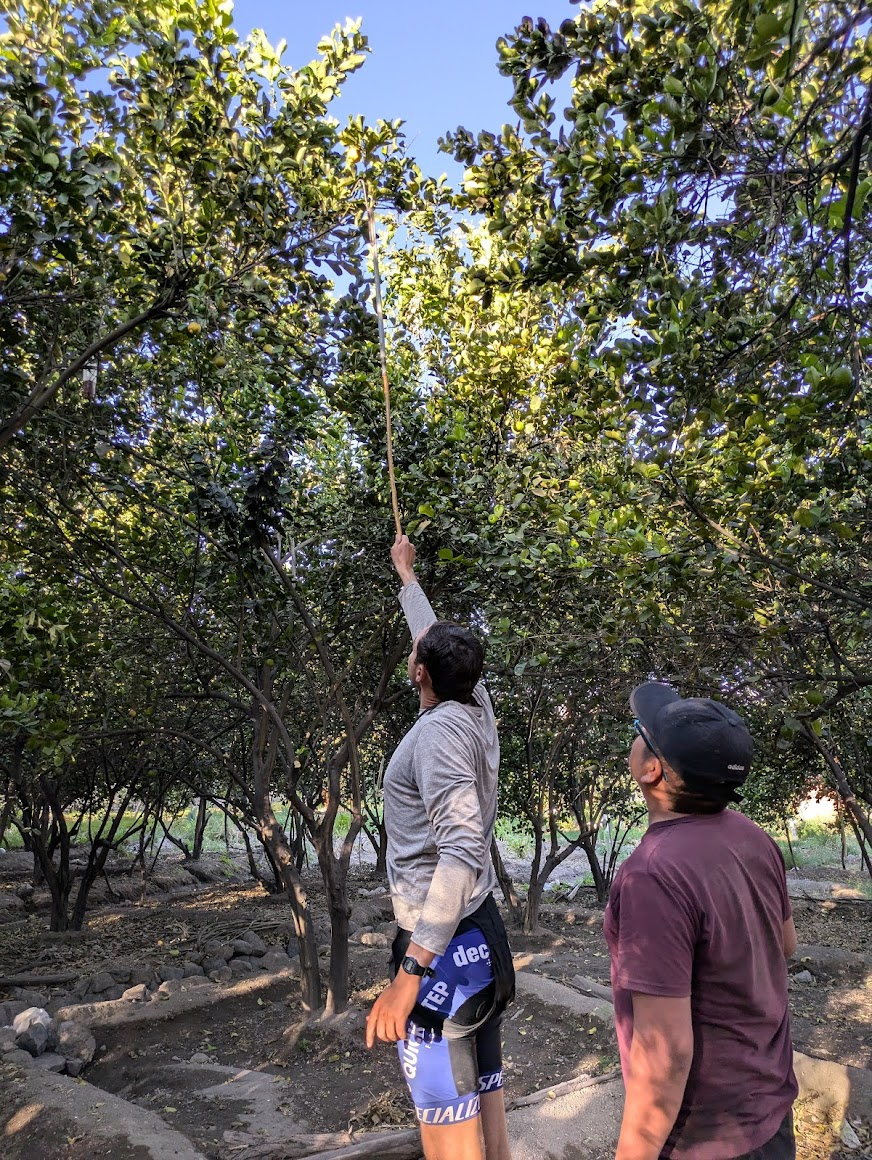
A stick and hook will do

All in all the Camino del Puma delivered on every level. I think anyone looking to do some bicycle touring in South America should put it on their list. Incredible volcanic landscapes, beautifully kind people, empty roads and gorgeous cycling. The route was brilliantly conceived by Mark and Jane in 2018, two kiwi bikepackers who cycled from Alaska to Ushuaia. They’ve published great info on their website, including some fantastic photos which do much better justice to the breathtaking scenery of this region than my amateur snaps.
After some recuperation in Arequipa where I watched fabulous street parades for the city’s 200th anniversary, I’ve headed to Cusco for some hiking and visiting a bunch of Inca ruins.
Go well, and lots of love
George
